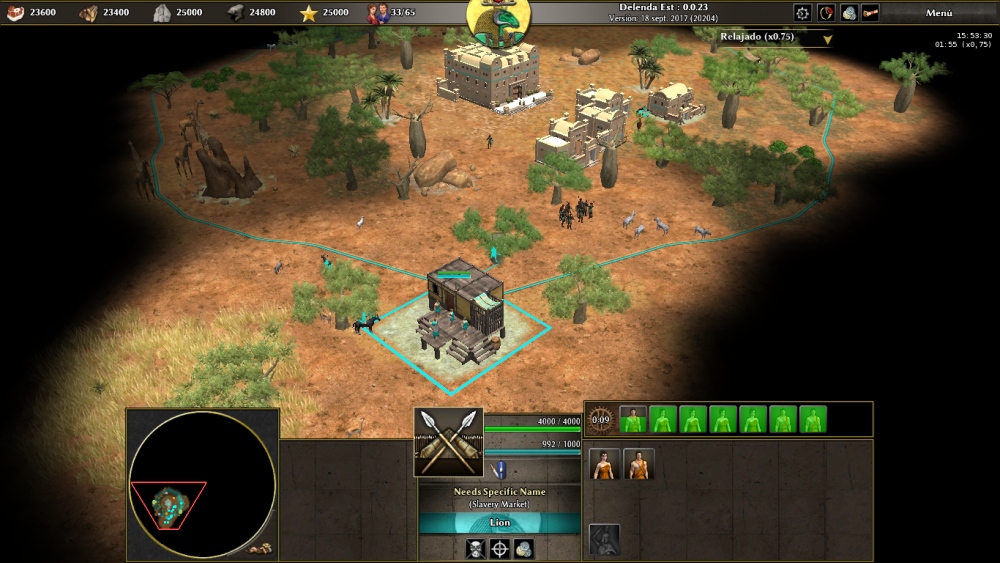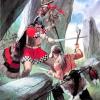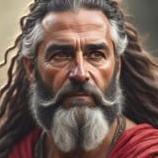Search the Community
Showing results for tags 'buildings'.
-
While working on a PR to incorporate hotkeys for building placement, building selection, and unit selection, I created this mod that—on top of building placement and selection—adds hotkeys to select several unit classes not covered by AutoCiv: all infantry, cavalry, champions, mercenaries, healers, heroes, and even dogs! It can be used alongside AutoCiv, although I haven’t tested it with its latest versions. There are still some features left to add, but I’d really appreciate help from anyone willing to test it and help catch any bugs I might have missed. I’d also love to publish it on mod.io, so any help with that would be greatly appreciated! To install it, just unzip BuildingHotkeys.zip and copypaste the BuildingHotkeys folder into your mod's folder Here's a demonstration video: BuildingsHotkeys mod.mp4
-
The warfare The Aztec armies had a high level of organization and ordering for combat. The men were divided into squadrons of 200 to 400 warriors commanded by a captain, who wore a large flag on his back to be able to distinguish himself on the battlefield. The chief of the state was the tlatoani, and almost at his level was the cihuacoatl who shared with him the tasks of government. The tlacochcálcatl and the tlacatéccatl were great generals, whose functions included advising the tlatoani on matters of government and declarations of war, presiding over military tribunals, governing the garrisons that the empire established in border areas, and, of course, leading and directing Military campaigns There is much difficulty in clearly discerning the chain of command in the Aztec army. Good (2009a) considers that: The Tlacochcálcatl had greater responsibility, since he guarded the armory and, furthermore, after the victory against the Tepanecas, when the Aztecs distributed dignities and rewards, Tlacaelel was granted this appointment and Moctezuma Ilhuicamina the one of tlacatéccatl, and it is known that at that time Tlacaelel had more political weight than Moctezuma I in the government of Itzcoatl. It is even possible that just as in the government the tlatoani and the cihuacoatl were almost equal, there are those who speak of even government, perhaps that dual reflex was also repeated in the military sphere, with the charges of tlacochcálcatl and tlacatéccatl. (P.14) The declaration of war corresponded to the ruler or tlatoani, who, having met with his Council, sent messengers to the target province to warn of their hostile intentions. This one had two options: to remain under the Mexica orbit without fighting and accepting, through the diplomatic channel, the imposition of the tribute or to collect the glove and to fight. In this case the tlatoani made a public appeal to the neighborhoods or calpulli that had their squadrons ready for battle (Bueno, 2009b, 186). Uniforms and Orders The generic name for the costume they wore in battle was tlahuiztli. When ascending on merit, they were allowed to use in the battle a ichcahuipilli or cotton armor and a ponytail with a tuft collected on the crown. This protective garment had the great advantage of being lightweight, which allowed for greater mobility in combat while protecting the warrior from a good part of projectiles, arrows and contusion weapons (Cervera, 2008) The ordinances dictated by Moctezuma I established the distinction of the combatants by the use of costumes, badges, emblems, arms and hairstyles corresponding to certain type of warrior. These divisions could respond to different degrees, tactical units, or even ethnic affiliation. The costumes of the nobles were elaborated with expensive and exclusive materials that the commoners could not use, mainly feathers. Violating these standards was punishable by death (Bueno, 2012). Within the hierarchical Mexican military structure, there were diverse classifications that reflected to a great extent the social status of the combatants from their origin and the merits that they had obtained in the battles. Each military order had a particular garment that referred to attributes and symbols of certain gods, and in many cases were based on representative totemic animals that conferred their qualities to the warriors. These suits were placed on top of the cotton armor which, along with the impressive plumes of feathers over their heads, gave them a formidable image in front of the enemy. Among the most important orders are the eagle or cuautli warriors; The jaguar or ocelotl warriors; Coyotes, otomies, among others. They enjoyed tax breaks and other privileges (Bueno, 2009a, pp. 17-18). Among the nobles were also the priests who, instructed in the calmecac, formed an important part of the imperial troops. They led the army, bearing the images of the protective gods, but not only were they limited to that, but they fought in battles and ascended the ladder by demonstrating their skill in combat, although apparently they needed more merits than the rest Of the noble warriors to obtain the same degrees. They were also responsible for "seizing" the gods of the vanquished peoples, to locate them in the temple that had been built in Tenochtitlan for this purpose (Bueno, 2009a, p.15).
-
- 40 replies
-
- 3
-

-
- slavery neutral
- gaia
-
(and 1 more)
Tagged with:
-
Hi, I have experience with age of mythology and I begin to play with 0ad on Linux This game is very nice However I don't know how to capture buildings, how does it work? thank you !
-
How I can do for a captured building, produces units specific units that aren't in the roster of faction. im creating slave market. @wowgetoffyourcellphone The slaves are imperial romans unit but don't work as mercenary camp. Only as market.
-
- buildings
- delenda est
-
(and 1 more)
Tagged with:
-
This is similar to my Gaulish buildings topic, but this is more detailed. Hi, so once again I come with suggestions for the Gauls, as I still feel they are one of the less detailed civs. Units Currently, they have the cavalry skirmisher, spearman, slinger, foot skirmisher, cavalry swordsman, elite longswordsman and cavalry elite spearman. I was wondering if perhaps one more unit (although this may affect the balance negatively) could be added, swordsman (I think it was Bataroas in EB). Basically, he'd be the same as the spearman, but has a short Gallic sword (this may be unnecessary as there is already a cavalry swordsman). Another thing is for the spearman and cavalry swordsman. When leveling up, they go from clothing, colourful clothes, chainmail. The Gauls actually had a type of Linothorax and they had leather armour, which could both be used for stage 2. Gallic Linothorax. http://leuki.pagesperso-orange.fr/vaevictis.html These re-enactors use both Gallic linothorax and Leather armour. 4 types of Gallic Leather Cuirasses, this image is from the research from Total War Rome 2. Buildings In the other topic http://www.wildfiregames.com/forum/index.php?showtopic=19377 Gaulish Buildings, I already posted pictures on the types of buildings, but with less detail. Most of the following images are from animated reconstructions of the Celtic village near Bundenbach and animated reconstructions of the Hallstatt town Heuneburg. These are from more eastern Gaul, and a different era, but still Gaul nonetheless. Their buildings wouldn't become less advanced. An animated picture of Heuneburg, notice how most of the house have a similar pattern; long, single story but with a sharp, tall roof varying between wood shingles/thatch. Another animation of Heuneburg (this time a different animator) but still similar, the houses also follow that pattern I spoke about. The walls were exclusive to this area, they were made of mud bricks. So adding this type of wall wouldn't be that accurate. House and storehouse respectively in the village reconstruction near Bundenbach. Drawing of what Bibracte might've looked like. Besides that, currently the walls are fine (they look like the Kelheim type gallic wall) but it's a bit annoying that the fences on top look so crude, Celts were great carpenters and there's no reason they wouldn't be able to make a nice fence. The Civic center currently looks smaller than that of most of the other civs. The Barracks and blacksmith are fine. That's all I can think of now, I may add more.
-
Hi guys. AI is back to its old trick of putting all defense tower toward top of map:
- 15 replies
-
- 1
-

-
Some new buildings don't come with a new icon. #3959 Vesta (WIP) Ceres. I make a mistake but.... can be helpful later this image
-
References & Concept Art The first task is to find pictures of existing African buildings, we gathered hundreds of pictures of Northern African architecture. However, here we met our first challenge: were not making a set just for the Malians, were having them share their set with another African civ. So we had to make a generic African set, which is not something that exists. Time for concept art! We started with the market as our first building. The reason for this was two-folded. First of all, the market is a building that changes in all ages, so we can use its style and texture as a base for the rest of the buildings. Secondly, its a big building with a lot of variety, which helps us define that proper style. Basic Blocks Time to turn this pencil & paper artwork into digital models. We jumped into our modelling software and came up with the following models: However, we made a big mistake, which we didnt notice right away. All buildings in Age of Empires II have their characteristic shapes and sizes. Although the market was roughly following the proportions of the existing markets, it wasnt close enough, and it felt like the buildings stood out too much. Back to the drawing boards, where we analyzed the existing sets to turn all buildings into basic blocks. Playing with LEGO as it were. Source:http://www.forgottenempires.net/age-of-empires-ii-hd-dev-blog-4-african-architecture Rendering & post-processing Now, what was the reason we got the market to fit in with the other buildings in the end? Once again, two important reasons. The first one is because of the way Ensemble Studios created their buildings. In the 90s, 3D modelling wasnt as evolved as it is today. Each and every object was created individually, down to every brick in a wall. Which is exactly what we did. The straws in the thatch roofs on the Feudal market are all modeled individually. Which you can also see in this detail of the Imperial market ####### This part isn't important to us. But I included as extra info , or a curiosity. #### Age of Empires II HD Dev Blog #4 African Architecture by Cysion | Aug 28, 2015 | Age of Empires II, Dev Blog, News | 137 Comments New civilizations also mean new buildings! And we were presented with a big plate of fresh challenges. Looking back at the new architecture sets introduced in Age of Empires II HD: The Forgotten, we knew we had to step up our game. The Italian set was masterfully photoshopped from the Middle Eastern set (with some exceptions) but we wanted to go the extra mile for the African set. Time to brush off our 3D modelling software! References & Concept Art The first task is to find pictures of existing African buildings, we gathered hundreds of pictures of Northern African architecture. However, here we met our first challenge: were not making a set just for the Malians, were having them share their set with another African civ. So we had to make a generic African set, which is not something that exists. Time for concept art! We started with the market as our first building. The reason for this was two-folded. First of all, the market is a building that changes in all ages, so we can use its style and texture as a base for the rest of the buildings. Secondly, its a big building with a lot of variety, which helps us define that proper style. aoe2_african_concept_art_market Basic Blocks Time to turn this pencil & paper artwork into digital models. We jumped into our modelling software and came up with the following models: aoe2_african_first_models_market However, we made a big mistake, which we didnt notice right away. All buildings in Age of Empires II have their characteristic shapes and sizes. Although the market was roughly following the proportions of the existing markets, it wasnt close enough, and it felt like the buildings stood out too much. Back to the drawing boards, where we analyzed the existing sets to turn all buildings into basic blocks. Playing with LEGO as it were. aoe2_african_lego_blocks_market Now we had the basic shapes, we could start modelling again. This time we focused hard on the Feudal Age set. A lot of improvements were made as you can see on the images below. Feudal Market V1 shows the market prior to our block-building analysis and V2 shows the revamped version with proper AoE2 proportions. SvHDV5q However, we werent happy yet. The shape was right, but the building looked a lot more simple than the buildings currently in the game. This was due to two reasons: firstly, African feudal architecture was mainly mud-based, which has functionality over aesthetics, but secondly is because we made it look simple. Its not because its simple, that we cant make it look more special, time to step up our game! So we began experimenting, which eventually led to all the images below. First we tried with some more complicated textures. Then we started to change the shape of the building, which eventually led to V3, which we nicknamed Flintstone-melted potato with a tennis sweatband-style. Needless to say, we ditched that one in the end. aoe2_african_potato_melted_flintstone_market Many iterations later, we ended up with the final Feudal Market, which is the one you will see in the game. aoe2_african_final_model_feudal_market Rendering & post-processing Now, what was the reason we got the market to fit in with the other buildings in the end? Once again, two important reasons. The first one is because of the way Ensemble Studios created their buildings. In the 90s, 3D modelling wasnt as evolved as it is today. Each and every object was created individually, down to every brick in a wall. Which is exactly what we did. The straws in the thatch roofs on the Feudal market are all modeled individually. Which you can also see in this detail of the Imperial market. aoe2_african_imp_market_stages Now comes the most difficult part: weve seen the models in high-quality 32-bit renders this whole time. But for Age of Empires II, they need to be converted to 8-bit images, which means from 24 million colors to just 256! Luckily we can use Photoshop to help us in that conversion so that not too many color-ranges get lost, but its still a shocking difference to see sometimes. Last but not least, we add eye candy! The last step in post-processing to make the buildings fit with the rest of the game. We copy some barrels, items and little plants that can be found on other buildings and paste them on our new models. Its been a month-long journey, and at the time of writing, were not at the end yet, but I would already like to thank our lead artist Jorgito, for all the hard work he has done and still maintaining his sanity over it

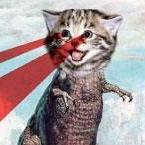
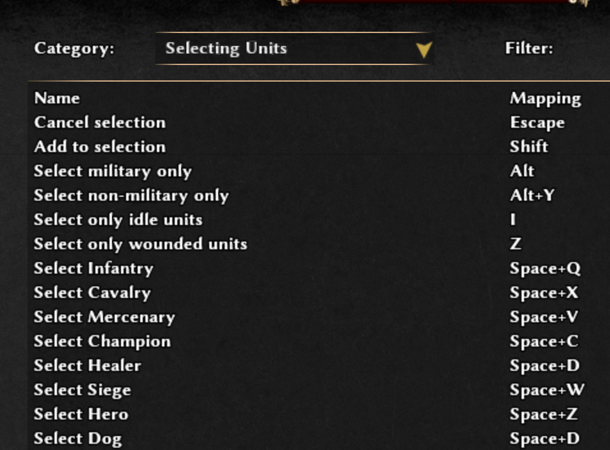
.thumb.png.ce58cea22940c255f5b0a735d5abee36.png)
